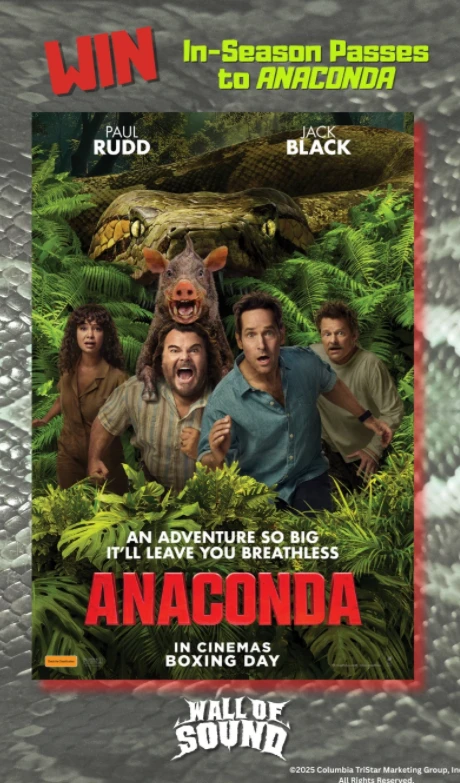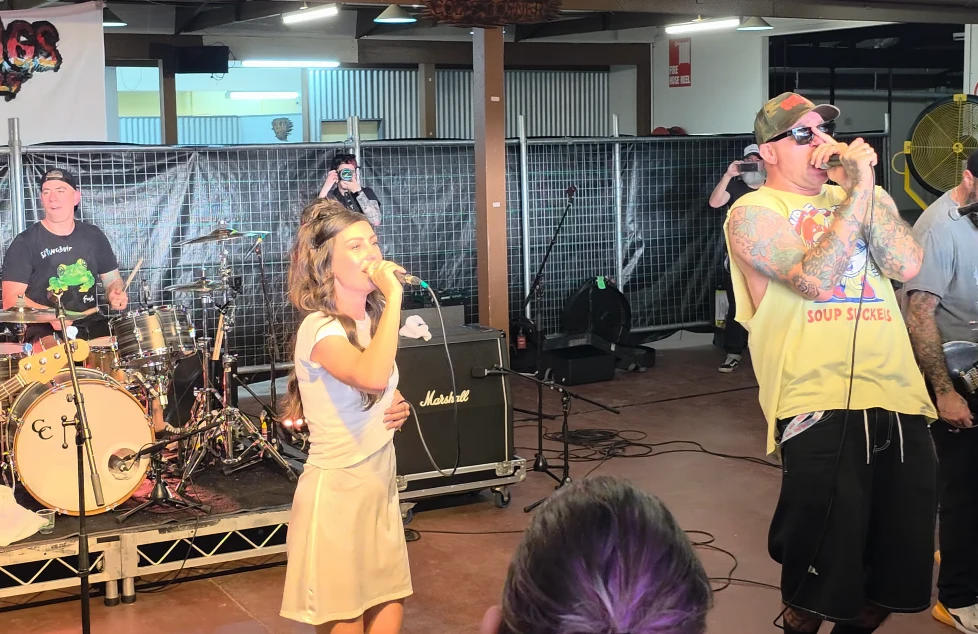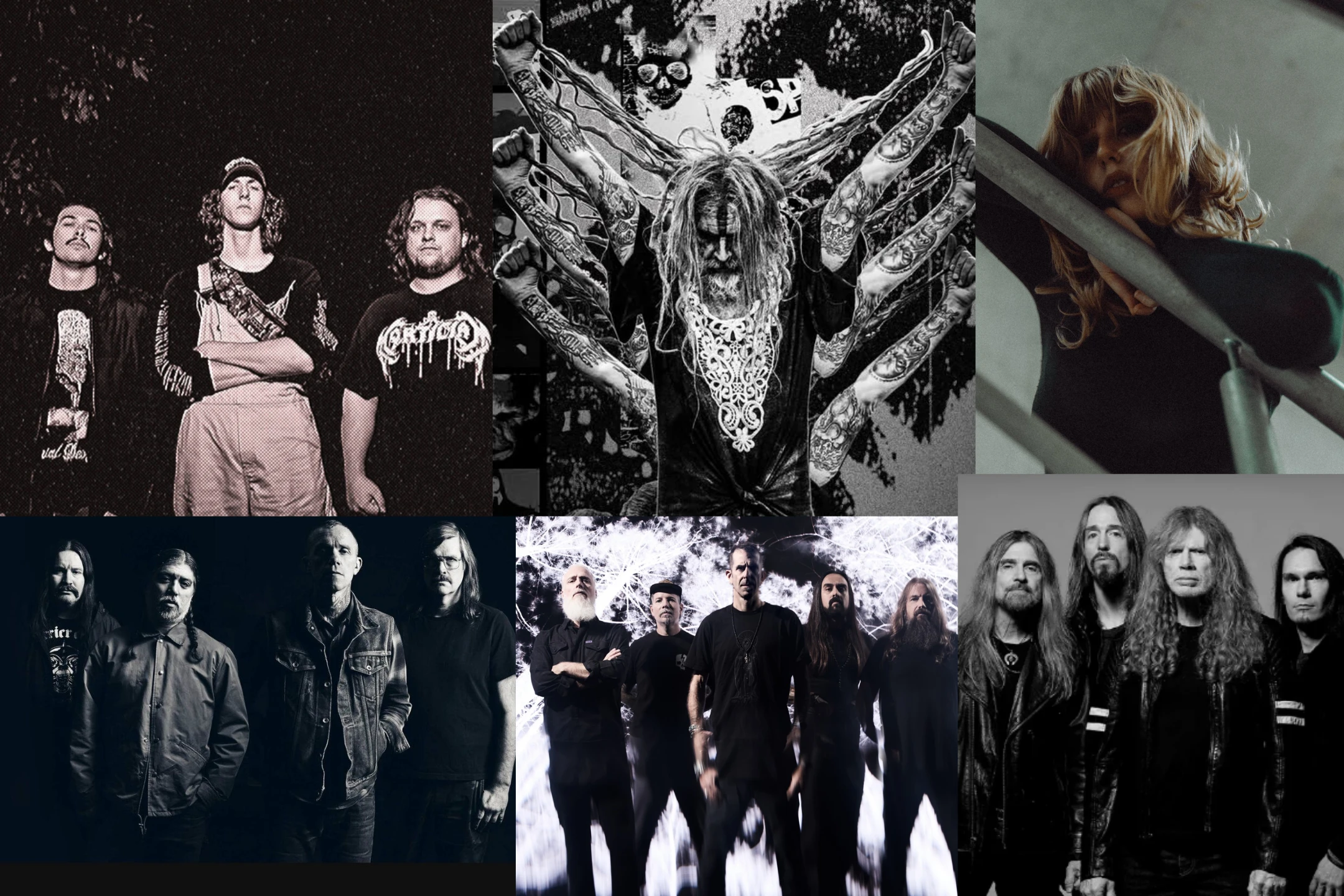
Mastodon’s wizard in hiding Troy Sanders is synonymous with heavy as fuck bass lines and if you’ve been paying attention for the past 10 years, you’ve probably seen his signature Fender Jaguar bass. So it was more than a little surprising to see them announce a new signature Precision bass in his name.
The P bass might be one of the most famous and reliable basses out there but it’s not exactly known for being the choice of modern metal bassists. Well, that all might be about to change because Troy and the good folks at Fender have cooked up a real treat. We chatted with Troy to get to run down on his new phat bass.
Troy, welcome back to Wall of Sound - please tell us all about your new signature P bass!
Well, I don't know where to begin.
Fender and I, thankfully, have a long history of very healthy relationships. So that's, a very, very important factor in all this. We've worked together for 10 years. Let's go back 15 years ago, I started a relationship with Fender, they were very great. And still are. Five years later, I approached them about the idea of doing a signature Jaguar bass in the silver birch colour scheme, and they were very excited to try that. And so was I because that's a big deal, that they were willing to put my name on one of their instruments, because their roster, as you know, is just, it's full of legends only. So I was thrilled that they entertained the idea to do that. And they're very happy with the success of it as well, not only the cool product, but you know, it moved a lot of units.
So six years ago, in 2017, I had the idea of wanting to do a P bass. And that was just, you know, kind of throwing a dream at them. And they loved the idea to put something together with my name on it in the silver burst colour scheme again.
And we went back and forth for the past six years trying to get this thing released into the world and that all happens today! So that's a long story short, but it's a lot of trust. I guess that they have in me. I obviously trust them. But I just credited it to the combination of having a healthy relationship over 15 years and a shared desire for these two instruments that we've done together.
[gallery type="rectangular" ids="https://wallofsoundau.com/wp-content/uploads/2023/03/0143120391_fen_ins_frt_1_rr-1.jpeg|,https://wallofsoundau.com/wp-content/uploads/2023/03/fendd.jpg|,https://wallofsoundau.com/wp-content/uploads/2023/03/fend-1.jpg|"]
That's amazing. And what drew you to do a P bass? I know I've seen you play them in the past. I'm pretty sure I spotted one in the documentary for your last album Hushed & Grim. What made you want to do a P?
Well, nearly every studio that I've ever walked into, at least in the United States where we record stuff, there's always a 1970s P bass in-house ready, you know, available for use. And almost every single time I would have my one or two bases I would bring in, sit down with the engineer or the producer, whoever, try my stuff. And it's always the same thing. 'That sounds pretty good. But try this’. And they'd go to a 40-year-old P bass. And damn it, that's what I almost always wind up tracking with. And I noticed that multiple times over and over, I'm thinking, man, what's so special? I mean, I know it's a highly revered instrument. But what makes that '70s everywhere the most credited bass tracking on all Albums of All Time? What's up with that? I still don't know for sure. But I do credit that piece of wood that is, you know, aging gracefully.
Only becoming, bigger, better, warmer tones. So I had the idea that I wanted to have my own instrument that could track best in studios. Of course, you can play whatever bass you want to; But if you're trying to find the best tone and the best sound for the song, and for the album, you go with what sounds best.
So I wanted to try to copy something like a '70s P bass but in a brand new form. So I stuck with the idea that Fender really appreciated and liked. So it moved forward, like the medium size neck, I didn't go for the fattest one. And I didn't go for the thinner one, because I already have thin ones on my jazz basses, and the Jaguars are thinner, so it's easier for faster movement stuff. It's very comfortable. The thick one feels good on simple slow root notes. But when I move around, even though I kind of have big hands, I wasn't as comfortable. So I kind of went right in the middle, which is credited towards many of the shapes and sizes of the 70s bases.
So it kind of started from there. And I wanted to have my own that I could take into a studio with an arsenal of basses. And that'd be the one that sounds best. That was the goal.
That's awesome. I'm a pretty big P bass fan. I've got one sitting right next to me. What are the electronics, because you know, your Jag bass has some pretty unique electronics, I guess, and a really cool setup, how is the P different? Or how is it similar?
Yeah, that was what excited us to create this bass as well. So the few P bases that I own, they're all passive. And they do sound great in studios, and I do love to play them. But we travel, and we play live more than we do anything else with my live setup as all active bases. And when we change bases and guitars for different tunings, I like to have it streamlined to where it's all active. I've just played that way for a long time. And I kind of keep all my live bases active. So I wanted an active bass for live purposes. But I wanted to think about doing just a passive bass to really be the go-to bass when you go to track in the studio.
The idea was birthed that you can have an active passive toggle switch and simply go back and forth. So these electronics; it takes two nine-volt batteries. So when it's active, it packs a big punch. And it's got a stacked bass/treble knob. So it just saves on a little bit of space, a little bit of real estate, the toggle switch to go active/passive, it's tucked away. So you'll never be playing hard and turn it off or on. So I guess it's really versatile. I want a passive tracking studio and I want active to play live. Well, we just were able to put the two together. So I think that's one thing that really makes it interesting. And I hope that a lot of other people find that interesting. I don't know how many bass guitars come with an active/passive setup. So we'll see. To me, it's really comfortable. And it gives me the best of both worlds. I love it. I hope other people do too.
[gallery type="square" ids="https://wallofsoundau.com/wp-content/uploads/2018/03/Mastadon-9.jpg|,https://wallofsoundau.com/wp-content/uploads/2018/03/Mastadon-3.jpg|,https://wallofsoundau.com/wp-content/uploads/2018/03/Mastadon-7.jpg|"]
Mastodon LIVE Photo Gallery by Bree Vane.
For sure. And yeah, why do you switch to active live anyway, just out of interest?
I think it's just that in the formative years, my bass guitars were active. And when I was able to afford a second guitar, I got active, and then I just kind of kept it that way. Only a few years ago, I was able to be able to pick up a bass that I really loved the way it sounds, looks, and feels that would be passive, and that's fine because I can practice with that I can record with that and whatever, but it's the live environment that I really focus on. And, you know, if you're playing active and then you switch bases and you go passive, your level is going to be dropped down pretty substantially. So to save time for my bass tech to turn my amp up or the front-of-house guy to move the faders, I just like to keep them all active. So it's just kind of become like a habitual thing.
For sure. And I mean, you're pretty famous for what your bass sound is. It's always brutal - it's a serious sound. And I guess you don't want to mess with that. What are you doing exactly live to capture that intensity, that sound that is synonymous with your name?
The bass tone itself? Well, for the past, like 10 years live, I've basically played nothing but my Fender Jaguar, and a Warwick, for our songs that we tuned all the way down to A for. So those have been the main two basses in the live environment. They're both wonderful instruments.
I have a custom signature pedal from a company called rent and cuff. It's called Elephant Skin. And it's my distortion pedal that has a boost on it as well. It's modelled after the old green Soft Tech, Big Muffs, the Russian-made ones. And it's got this cool, extra boost knob on it as well when you really want to bump yourself up. So it's my Fender or my Warwick through my elephant skin distortion. A TC Electronic chorus pedal. A Dunlop wah. And that's it. It needs to be simple. I mean, I have a lot of pedals in our practice facility. Because they're fun as hell and I love that they're everywhere because I really enjoy finding and creating different sounds. But when it comes to performing live in Mastodon, that's way too much. And I really need to just simplify and replicate what I do on the record.
Yeah, awesome. Yeah, I noticed in the documentary you have a really big array of pedals.
You sort of like collect them as you're on tour or just, you know?! Yeah, and again, it's like, it's like a toy collection. You know, they're just super fun to play with. And sometimes I'll pick up a pedal and don't really enjoy it that much. So I'll just pass it off, give it away, sell it, whatever. I just really want to keep the toys that I enjoy.
[embed]https://www.youtube.com/watch?v=9Rgi5C0JbRs[/embed]
That’s really nice. So this bass has a high mass bridge, which is a change from your Jaguar. The Fender High Mass bridges and the Leo Quan bridges are one of my favourite changes you can make to a bass, just great for giving the sound some clarity and heft.
Yeah, this bridge was going to give help with the added warmth of the instrument. And, you know, a lot of the bridges that come on basses are pretty thin.
[Troy shows me the new bass] So that's the first time I've sort of laid eyes on it and got a bit of a feel for the new bass. That's cool. It looks, really sick.
Thank you. I'm very happy with it. And, you know, it's like anything else, like a slow cooker meal, or like a song that takes a while to come together? Or an album. You know, this has just been going back and forth in the creative collaborative process for so long. It's like an album release day. You know, it's like it's finally available. The process is done. And now it's out there to live forever, for better or worse. Yeah, and it's exciting.
I think being a P bass by default it's got that universal appeal, to a lot of musicians.
Yeah, [P basses] obviously have become the standard, or, you know, the legend that it is synonymous with rock and roll. There are a lot of other great instruments, too. I know that for a fact. But the Fender bass is it's such, you know, it's more than just a staple. I'm just thrilled. You know, I'm thrilled to own it. And I can't wait to play it a lot.
Yeah, absolutely. So I'm guessing you didn't use that particular bass or a prototype version on the album?
No, that was I mean, we started recording that and it's, it was 2020/2021. I think we recorded in 2020. And the record came out in '21. So I didn't have a prototype at that stage. I did use a Fender gold sparkle passive P bass on a couple of songs. I used a Fender fretless on bits and pieces. I used the Warwick for all the down-tuned songs. And I don't recall what else because it's been a few years now since we actually tracked that record.
[embed]https://www.youtube.com/watch?v=sx1L2XW1N0c[/embed]
Fair enough. Yeah, I saw a fair few bases in the documentary, but it's always hard to get a feel for what's actually going on in the studio, because these processes are, you know, lengthy and arduous sometimes. And you're about to kick off on a big US tour. So I'm guessing you will be taking out this bass and giving it a good old thrash?
This is basically an addition to the arsenal. I look forward to playing it very much. I love the Jaguar. And I have played it live at every gig for 10 years. So it's not going to go anywhere. But I will definitely be adding this to the mix. And I'll probably just feel out whatever is more comfortable for various songs. I'm not really sure. But we're just now getting into heavily getting into like rehearsing for the tour that starts in about six weeks across the states. So I'll be playing a lot of it of this P bass, and that's exciting to me.
Are you likely to come back to Australia anytime soon?
The last conversation we had with our booking agent said that it looks very promising that we will be able to go back over in the very near future. We do have some tours already lined up for this year. So we made it known that it's our top priority to tour.
We love touring in the United States and North America but we also really love South America, Australia, and Eastern Europe. So we did ask our booking agent to please put Australia on top of the priority list. So I would like to say yes, we'll be there soon, but don't have confirmation of that yet.
No, we get it and touring. It's hard at the moment. There's a lot of stuff going on, I guess. Dude, well, thanks so much for chatting with me. I'm super excited about bass. Hopefully, I can get my hands on one soon. Is there anything else you want to add for people who might be reading this? Bass players, fans, guitar enthusiasts, whatever who want to have a crack at it?
You know, shit. Put it in your hands. It might feel good. And if it feels good, do it. Because it's all about feel. Close your eyes and think of something. Think of something wonderful. And play any note that you want, just anything, you don't have to play any note. Just close your eyes, hold in your hands, and feel it and see where your mind takes you.
Interview by Dave Mullins

Take a closer look at the Fender® Troy Sanders Precision Bass® right here
Features:
- Pickup Power: Loaded with colossal power and tuned to perfection with Tim Shaw-designed split-coil precision bass® and single-coil jazz bass pickups
- Active Circuitry: Includes a custom-voiced 18V preamp for instant power-boost
- Rock Solid Bridge: Sports a Fender HiMass vintage bridge to ultimate stability and tone.
- Signature Finish: The alder body and headstock are finished in Troy's signature Silverburst finish and a distinctive chromed control plate.
- Neck Construction: Features a sturdy maple neck with custom ‘70s P-bass® “C” shape and 9.5”-radius slab rosewood fingerboard with pearloid block inlays and 20 medium jumbo frets.
- Distinctive Markings: Uses Sanders’ own signature decal on the back of the headstock, while the neck plate displays a Mastodon “Remission” logo and the inlays feature a custom “Emperor of Sand” icon at the 12th fret.






